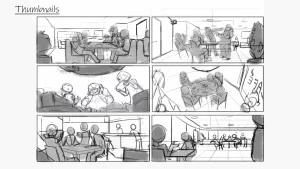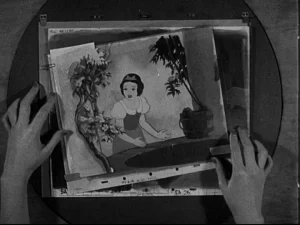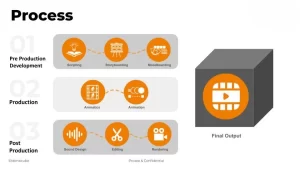Alright, let’s get into the fun stuff – 2D animation process! It’s an art form that brings flat drawings to life, and trust me, seeing your creations move is an absolute joy. Here’s a casual walkthrough to get you started:
First up, you’ll need some sketches or storyboards to work with. Don’t worry if your drawing skills are rusty; start with simple shapes and stick figures. The key is mapping out the movements you want to animate.
Once you’ve got your sketches ready, it’s time to go digital. Fire up your animation software (there are tons of free options out there) and start creating your scenes. Break down each movement into individual frames, and don’t forget about those in-betweens for smooth transitions.
Let’s Understand 2D Animation
What is 2D Animation?
The classic art form that has been delighting audiences for decades! It’s the good hand-drawn style that brings characters and worlds to life on the screen. You know, like the classic Disney movies or those Saturday morning cartoons you grew up watching.
In a nutshell, 2D animation is all about creating the illusion of movement by rapidly displaying a sequence of flat images or drawings. Animators painstakingly draw each frame, capturing the slightest movements and expressions of their characters. It’s a labor of love, for sure!
The Evolution of 2D Animation

Look, 2D animation has been around for ages, and it’s gone through some serious glow-ups over the years. Back in the day, animators had to painstakingly draw each frame by hand, which was a total labor of love. Can you imagine how long it took to create even a short character?
But then computers came along and changed the game. Suddenly, animators could create digital drawings and make those puppies move with the click of a button. Mind-blowing, right? Tools like Adobe Animate and Toon Boom became a animator’s best friends.
So yeah, it has come a long way from those early days of pencil and paper. Who knows what crazy techniques animators will cook up next? One thing’s for sure, though – this art form isn’t going anywhere anytime soon.
The 2D Animation Process
Pre-Production: Planning Your Animation
Before you dive headfirst into the actual animation process, there’s some crucial planning and pre-work that needs to be done. This pre-production phase is where you’ll lay the foundation for your entire project, so it’s worth taking the time to get it right.
Some Important pieces of this step are:
Writing the script: where you decide on the exact words and speaker notes.
Storyboarding: where you draw the flow of scenes and events.
Concept art: where you draft the idea of your character and explore the possibilities. It also constructs the world your characters will explore and interact in.
Character Design and Backgrounds
The fun part of animation – bringing your characters to life and creating vibrant worlds for them to play in! 2D animation process is all about those expressive character designs and eye-catching backgrounds. With character design, you get to decide every little detail – from their wacky hairstyles and funky outfits down to the quirky way they walk or talk.
Then you’ve got the backgrounds – the stage where all the action goes down. Think colourful cityscapes, whimsical forests, or mind-bending alternate dimensions. The possibilities are endless when you’re working in that flat 2D realm. With some clever layout and styling, even the most basic backdrop can become a visual masterpiece.
Digital Tools in 2D Animation
In the realm of 2D animation process, digital tools have opened up new horizons. Yes, there’s still magic in hand-drawn animation, but now software like Adobe Animate, Toon Boom Harmony, and TVPaint have brought new dimensions. Tasks such as drawing each frame, arranging parts for movement, and layering are a breeze now. These conveniences are helping animators to challenge the limits and inject fresh styles and techniques into 2D animation.
Bringing It All Together: Production and Post-Production
Production: Assembling Your Animation
In the production stage, the animation team combines everything made in the planning stage. Here’s what they do:
Animating Characters : They use main and middle frames to make characters move.
Inserting Backdrops: In 2D animation, backdrops are inserted by combining the characters’ movements with the backgrounds. This procedure ensures that the characters seamlessly interact with their surroundings, resulting in a scene that is both cohesive and visually appealing.
Special Effects: They boost scenes with tricks like shadows, lights, and sparkly effects.
2D Animation Framing
After the plan’s set, the sketching part kicks in. Artists craft each shot, guaranteeing fluid shifts and stable characters action. This stage includes:
Keyframes: Sketching the crucial frames which mark any motion’s beginning and end.
In-betweens: Completing the frames between keyframes for smooth movement.
Clean-up: Clean-up: Polishing rough drafts into refined drawings.
Post-Production: Finalizing Your Animation
Ending stages detail refining your animation. This includes:
Compositing: This means merging everything into one, complete piece.
Sound Design: Incorporating speech, noises, and tunes.
Editing: Adjusting the animation to get the right speed and rhythm.
Exporting: Getting your final animation set and ready for sharing.
The Magic of 2D Animation Movies
Let’s talk about the awesomeness! These flicks have a special kind of charm that just can’t be replicated with fancy computer graphics. There’s something so pure and nostalgic about those hand-drawn frames flickering across the screen.
And let’s not forget the renaissance of 2D animation in the 90s with gems like The Lion King, Aladdin, and Beauty and the Beast. The artistry and attention to detail in those movies is just mind-blowing. Every single cel animation was inked and painted by hand!
The Role of 2D Animation Studios in India

2D animation is still going strong in India. Yep, those quirky, hand-drawn cartoons we all grew up watching are still being made by some seriously talented folks.
And let’s not forget the unique styles that have emerged from these studios. Whether it’s the vibrant colors of Indian folk art or the fluid movements inspired by classical dance forms, these animators have a knack for infusing their work with a distinct cultural flavor. But it’s not just about nostalgia or cultural representation. These studios are also pushing the boundaries of what 2D animation can achieve.
Conclusion: The Future of 2D Animation
So what’s the deal with 2D animation going forward? Is it a dying art or does it still have some kick left in it? From where I’m standing, 2D animation isn’t going anywhere anytime soon.
Sure, 3D animation is the hot new thing and gets all the attention these days. But there’s something special about classic 2D animation that just can’t be replicated. The hand-drawn look has a warmth and charm that perfectly suits certain stories and styles.
At the end of the day, 2D animation is an art form deeply rooted in our culture. As long as there are creators who care about it, it’ll stick around. 2D and 3D can easily co-exist. The future is looking flat…in a good way!
FAQs
What is 2D animation?
It is a technique that creates the illusion of movement in a two-dimensional space through a sequence of 2D animation drawings, each slightly different from the one before it.
How do digital tools impact 2D animation?
Gone are the days when animators had to painstakingly draw each frame by hand. Nowadays, we’ve got some seriously cool tech that’s making the process way smoother and more efficient. Digital tools have revolutionized 2D animation by making the process more efficient and accessible. Tools like Adobe Animate and Toon Boom Harmony provide features that streamline tasks such as drawing, rigging, and compositing.
What are some notable 2D animation movies?
Some notable movies include “The Lion King,” “Spirited Away,” “The Iron Giant,” and “Klaus.” These films are celebrated for their artistic beauty and emotional depth.
Why is pre production important ?
Pre-production requires a ton of planning and preparation and it is the behind-the-scenes prep work for any 2D animation project, and it’s crazy important! It’s like the solid foundation you need to build a sturdy house.
What role do 2D animation studios in India play in the industry?
In India it play a significant role by producing high-quality content for local and international markets. They are known for their creativity, technical expertise, and cost-effective solutions.


